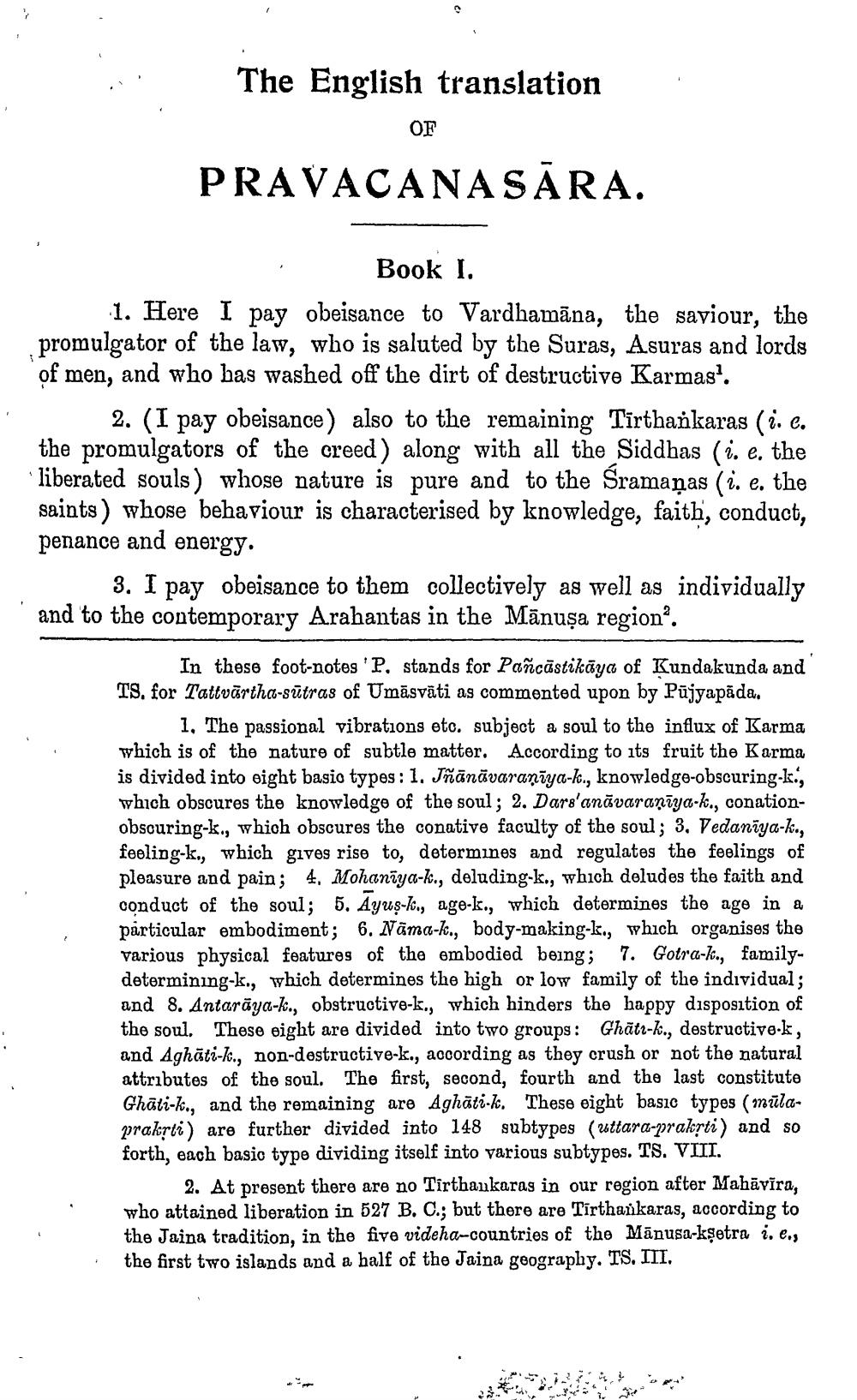________________
The English translation
OF
PRAVACANASĀRA.
Book I. 1. Here I pay obeisance to Vardhamāna, the saviour, the promulgator of the law, who is saluted by the Suras, Asuras and lords of men, and who has washed off the dirt of destructive Karmas?.
2. (I pay obeisance) also to the remaining Tirthankaras (. e. the promulgators of the creed) along with all the Siddhas (i. e. the liberated souls) whose nature is pure and to the Sramaņas (i. e. the saints) whose behaviour is characterised by knowledge, faith, conduct, penance and energy.
3. I pay obeisance to them collectively as well as individually and to the contemporary Arahantas in the Mānușa region'.
In these foot-notes 'P. stands for Pañcāstikāya of Kundakunda and TS. for Tattvārtha-sūtras of Umāsvāti as commented upon by Pūjyapāda.
1. The passional vibrations etc. subject a soul to the influx of Karma which is of the nature of subtle matter. According to its fruit the Karma is divided into eight basio types: 1. Jñānāvaranīya-k., knowledge-obscuring-k., which obscures the knowledge of the soul; 2. Dars'anžvaranīya-k., conationobscuring-k., which obscures the conative faculty of the soul; 3. Vedaniya-k., feeling-k., which gives rise to, determines and regulates the feelings of pleasure and pain; 4. Mohaniya-k., deluding-k., which deludes the faith and conduct of the soul; 5. Ayuş-k., age-k., which determines the age in a particular embodiment; 6. Näma-k., body-making-k., which organises the Various physical features of the embodied being; 7. Gotra-k., familydetermining-k., which determines the high or low family of the individual; and 8. Antarāya-k., obstructive-k., which hinders the happy disposition of the soul. These eight are divided into two groups: Ghätz-k., destructive-k, and Aghāti-l., non-destructive-k., according as they crush or not the natural attributes of the soul. The first, second, fourth and the last constitute Ghāti-k., and the remaining are Aghāti-k. These eight basic types (mülaprakrti) are further divided into 148 subtypes (uttara-prakrti) and so forth, each basic type dividing itself into various subtypes. TS. VIII.
2. At present there are no Tirthaukaras in our region after Mahävira, who attained liberation in 527 B. C.; but there are Tirthaikaras, according to the Jaina tradition, in the five videha-countries of the Mānusa-kşetra i. e., the first two islands and a half of the Jaina geography. TS. III.




